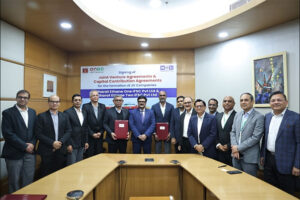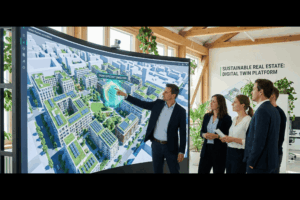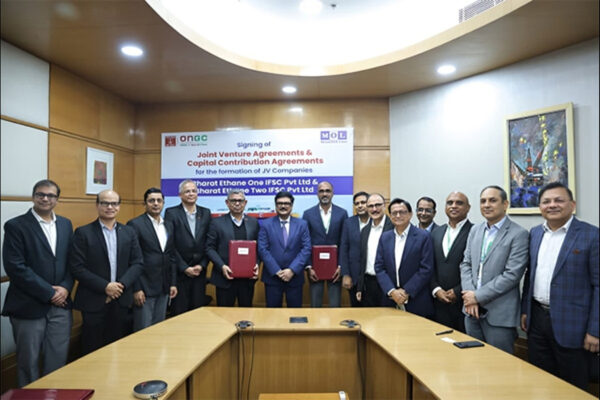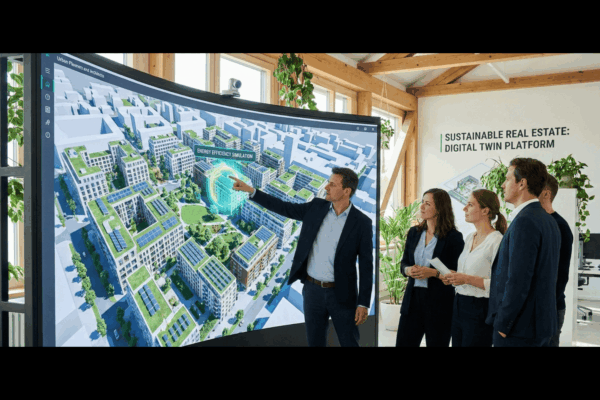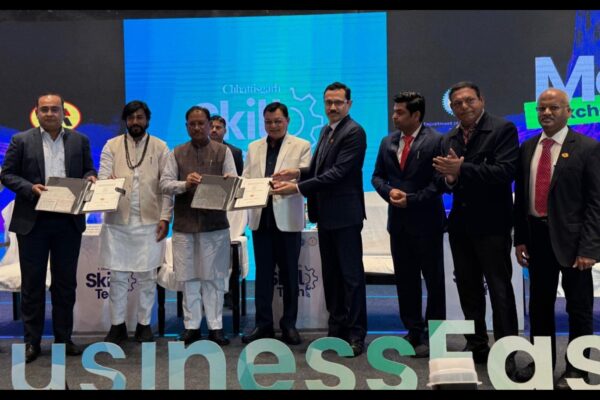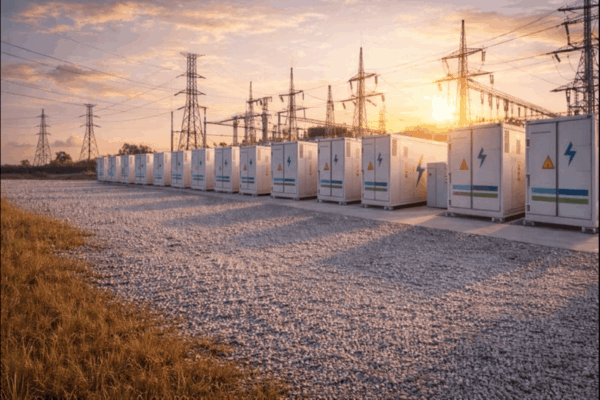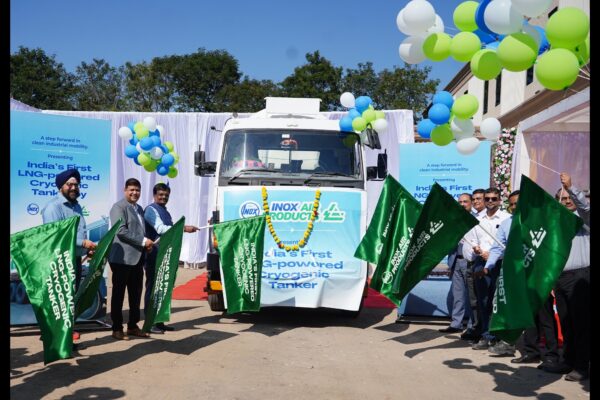Interview: Brad Johnson, Director – Electric Utilities at Bentley Systems
Mr. Johnson, considering the size, diversity, and pace of India’s growth, how would you describe the current state of its electric utility infrastructure? Which structural issues do you feel demand immediate digital intervention?
That’s a great question. Based on my experience working with Indian transmission operators over the past decade, I can confidently say that India’s transmission system is world-class—both in terms of construction quality and the adoption of advanced digital technologies like PLS-CADD and STAT. These tools have been widely and effectively used here. The next layer of the grid—substations and distribution—is where I see the most opportunity. This is typically where technical and non-technical losses occur, representing gaps through which generated power exits the system. Unlike transmission, this segment hasn’t been fully digitized yet, and many records remain outdated.
Bringing the same level of digitization and modernization to substations and distribution networks could significantly improve operational efficiency and reduce losses. More importantly, it has the potential to directly enhance service quality and reliability for end users—impacting daily life in a meaningful way. The progress made in transmission can serve as a valuable blueprint for driving the next wave of improvements in the distribution segment.
From grid modernisation to last-mile electrification, India presents a range of infrastructure ambitions. In your view, which regions or sectors (urban vs. rural, transmission vs. distribution) exhibit the greatest readiness—or resistance—to digital adoption?
That’s a great segue from the previous question. As I mentioned earlier, substations and distribution remain the areas with the greatest need—and the greatest opportunity—for improvement. What stands out about India, compared to other regions, is the willingness to approach these challenges differently. There’s a strong appetite for adopting innovative technologies to solve problems in ways that haven’t been tried elsewhere. While we’re now seeing acceleration in regions like Europe, South America, and the U.S., the conversations I’ve had here this week make it clear that Indian leaders—CIOs, directors, and others—are not only ready to adopt new technologies, but they want to do it now. There’s a real urgency and intent to move quickly. The primary barriers aren’t resistance or lack of vision, but rather the usual constraints of time and resources. Fortunately, we have highly capable teams ready to help bridge those gaps and support the rapid deployment of these solutions. So overall, I feel very optimistic—there’s momentum, commitment, and a clear path forward if we keep prioritizing this transformation.
Could you provide an overview of Bentley’s electric utility suite—particularly Open Utilities and its integration with GIS, SCADA, and AMI systems? How do these offerings align with Indian utility pain points?
That’s another great question. One of the exciting aspects of my role as Director of Electric Utilities at Bentley is the ability to look across our entire portfolio and see how our solutions can best serve the utility sector. You mentioned OpenUtilities, which is indeed our most purpose-built offering for utilities. Tools like OpenUtilities Designer and Map are commonly used for distribution system design—covering everything from physical design and renovation to greenfield construction. Meanwhile, OpenUtilities Substation supports detailed substation design in both 2D and 3D, including bill of materials generation and more. Beyond that, we offer industry-leading technologies such as PLS-CADD and PLS-GRID, which are widely used for both transmission and distribution modelling, as well as for creating digital twins. And that’s just the beginning—we could easily talk for another half hour about the broader Bentley ecosystem, including STAAD, MicroStation, ProjectWise, and AssetWise. It’s a comprehensive portfolio that supports nearly every aspect of the electric utility workflow. Regarding your question on integration: yes, integration with other systems—particularly GIS—is critically important. Over the past few years, we’ve made significant investments to enhance our integration capabilities, such as improving interoperability with Esri or incorporating open-source 3D geospatial capabilities through our acquisition of Cesium. GIS serves as the system of record for location-based data, helping us understand what exists and where. Our responsibility is not only to use that data for planning and design but also to feed accurate, updated information back into the GIS.
The second dimension involves integration with more logical systems like SCADA and AMI. While we don’t always integrate directly, we see these systems as complementary sources of insight. I often describe it as a three-legged stool: GIS, SCADA/AMI, and the physical infrastructure. For example, if SCADA indicates frequent operations on a specific circuit—such as repeated recloser events or breaker trips—that should trigger an investigation on the physical side. It may point to an overloaded line, a failing component, or a need for upgrade. Ultimately, while data from SCADA and AMI is critical, everything still depends on the built world—the physical infrastructure. That’s where our solutions really come into play, ensuring that the foundation is reliable, efficient, and future-ready.
How does Bentley’s OpenUtilities Digital Twin framework assist utilities in proactively managing grid resilience, especially in disaster-prone or high-demand regions?
Great question. When it comes to disaster-prone regions—whether mountainous terrain or open plains—frequent and severe weather is a major challenge. I live in the U.S., and just yesterday, we were under a Level 4 out of 5 risks for cyclones and tornadoes. Thankfully, nothing happened at home, but in a neighbouring state—I believe it was Iowa—in the past a powerful storm brought down a 69 kV transmission line. In that case, our digital solutions, including PLS-CADD and iTwin, played a crucial role. By leveraging these technologies, the utility was able to reduce restoration time by 18 days. That’s 18 days of improved quality of life restored for residents—an incredible impact when every hour counts. In mountainous areas, our tools such as iTwin Capture, PLS-CADD, and our advanced visualization capabilities help utility teams and foresters monitor and manage vegetation encroachment in high-altitude, alpine environments. These proactive efforts reduce the risk of outages caused by fallen trees or overgrowth in rights-of-way, which in turn supports grid reliability. So whether it’s the open plains facing tornadoes or mountain regions vulnerable to tree-related disruptions, our technologies are helping utilities not only maintain reliability but also respond swiftly and effectively when disasters strike.
Does Bentley offer interoperability with government platforms like India’s National Smart Grid Portal or State Load Dispatch Centre (SLDC) systems?
From a physical infrastructure standpoint, our systems are intentionally built to be open. We publish our APIs and data schemas, ensuring that authorized stakeholders—regardless of the platform they use—can access the data. This openness is by design, reflecting our commitment to interoperability, especially since not every organization is operating within the Bentley ecosystem. When it comes to Regional Transmission Operators (RTOs), balancing authorities, or others responsible for maintaining grid stability—such as ensuring frequency remains at 50 Hz—their focus is typically on the logical side of the grid. As a result, we haven’t historically provided them with a large volume of data. However, that dynamic is beginning to shift. With emerging technologies like dynamic line rating, there’s increasing interest from these entities in the physical characteristics of grid assets—such as location, capacity, and condition. While they may not be fully equipped to consume this type of data just yet, we’re ready to provide it as their systems and priorities evolve.
As infrastructure becomes more integrated—think multi-utility corridors, smart grids, and urban tunnelling—how do Bentley’s products enable real-time spatial coordination and clash avoidance?
One of the things I truly value about being part of our expanded team at Bentley is the opportunity to work alongside experts across multiple infrastructure domains—transportation, cities, airports, water, and more. These cross-sector conversations are critical, especially when we ask: How can a municipality that manages diverse infrastructure systems—often in coordination with privately owned utilities like power or telecommunications—effectively operate within a shared corridor?
A great example of this is the Elk River project with the Minnesota Department of Transportation (MnDOT), which took place just 12 kilometers from my home—so I feel a personal connection to it. MnDOT, Bentley, and one of our engineering firm partners collaborated on a major federal highway redevelopment through a congested, high-impact area in Elk River. This corridor wasn’t just a transportation pinch point—it was also dense with infrastructure: electric transmission and distribution, gas pipelines, water, and telecom.
To reduce disruption and improve coordination, we developed a 3D visual model of both the above- and below-ground infrastructure—essentially, a digital twin of the entire corridor. This enabled the various asset owners to collaboratively plan their work. The result? MnDOT saved hundreds of thousands of U.S. dollars in dirt work alone and avoided relocating dozens of miles of utilities, like gas and water lines, by designing around existing assets. This was a highly collaborative effort, with numerous stakeholders contributing to and benefiting from a shared digital environment. It’s a powerful case study in how integrated infrastructure planning—supported by digital technology—can drive cost savings, reduce disruption, and deliver better outcomes for communities. We’d be happy to share more details and even connect you with the users directly, so you can hear about the impact from their perspective—not just ours.
What specific capabilities or modules are built into Bentley platforms to support India’s regulatory compliance, particularly for the Central Electricity Authority (CEA) or DISCOM-level mandates?
Another important conversation we’ve been having is around CEA standards—specifically, how we can enhance our users’ ability to more effectively comply with them. Across our portfolio, we offer various applications that allow users to configure standards—for example, performing rolling sphere analysis for lightning protection, or ensuring clearances around conductors in confined spaces. These capabilities are already built into our tools with a high degree of configurability.
That said, we’re actively looking to go further. One of our goals this year is to deepen our understanding of the CEA standards and explore ways to more seamlessly integrate them directly into our software. The idea is to make compliance not just possible, but intuitive—something that’s naturally embedded in the workflow, so it becomes easier and more accessible for engineers. On the transmission side, tools like PLS-CADD already support region-specific standards such as CEA and GO95, allowing users to apply them with a simple dropdown selection. That’s the kind of ease-of-use we’re aiming to expand upon. I’d also add that standards themselves are central to our work, and I’m fortunate to work with incredibly talented engineers. One of my team members is actually the secretary of an IEEE standards committee, which means we’re not only implementing standards—we’re also involved in shaping them. We see this as a natural extension of our role in the asset lifecycle—contributing not only to how infrastructure is designed and maintained, but also to how the standards governing it evolve. We’d be very interested in exploring how we might support CEA and the broader Indian utility community—not to direct the process, but to assist by sharing what we’ve learned through our global and local collaborations.
As Bentley moves toward deeper AI integration, are there plans to embed machine learning for outage prediction, fault localisation, or autonomous grid stability alerts?
Those types of solutions—like ADMS (Advanced Distribution Management Systems) or OMS (Outage Management Systems)—typically fall under the category of logical grid operations, and are handled by platforms such as Oracle, AspenTech, and others. At Bentley, we don’t directly offer solutions in that space. However, what we do focus on is leveraging the data generated by those systems to inform decisions about the physical infrastructure. For example, as I mentioned earlier, we can pull safety and performance metrics from an ADMS and apply machine learning to analyze outage and operational data. This allows us to pinpoint areas of the physical grid that may need attention—whether it’s switchgear, reclosers, or transformers that are cycling too often. Similarly, tools like LiDAR or photogrammetry can help identify physical infrastructure anomalies—assets that don’t match standards or are showing signs of degradation. This is where we see AI and automation playing a significant role: in enhancing grid reliability by identifying physical vulnerabilities and enabling smarter interventions. On the forward-looking side, we’re also very focused on how to design the next generation of resilient infrastructure, reducing the number of fault events in the first place. Tools like OpenSite+ and OpenUtilities are leading that effort. And looking ahead, we’re exploring how technologies like natural language interfaces can be incorporated into our applications to make them even more intuitive and accessible for engineers.
With India targeting 500 gigawatt of non-fossil fuel capacity by 2030, what digital tools does Bentley offer for integrating renewables into existing grid infrastructure?
There are really two key dimensions to consider here. First is ensuring that both transmission and distribution systems—from bulk power generation to delivery—are designed to be fit-for-purpose in today’s evolving grid environment. With the increasing role of inverter-based resources and distributed energy generation, the traditional hub-and-spoke model is giving way to a multi-directional energy topology. Power might flow from one source in the morning and a completely different source in the evening, or be drawn from battery storage during peak periods. This demands a new level of flexibility in how we design and manage the grid. Our core design tools enable utilities to rapidly model and reconfigure the grid to support this dynamic behavior. The second major element is energy storage. While Bentley doesn’t manufacture batteries or lithium systems, we support the development of large-scale storage infrastructure, such as gravity-based storage. A great example is the 4,000 MW pumped hydro storage project underway in one of the Indian states. In this case, our energy domain solutions help design and manage the substations and transmission systems that connect such a facility to the grid—whether it’s for Adani, Tata, or another operator. Meanwhile, our water infrastructure team supports the design of dams, embankments, and hydraulic systems, and solutions like PlantSight assist with the design of generator halls and supporting mechanical infrastructure. So, it’s incredibly exciting to see how Bentley’s integrated portfolio supports all aspects of complex, green infrastructure projects—from hydro and solar to offshore wind and energy storage. We play a key role in connecting the dots, ensuring that these diverse systems come together in a way that strengthens grid resilience and supports a clean energy future.
How do you envision partnerships with Indian EPC companies, State Electricity Boards, and smart grid consortiums evolving over the next 5–10 years? Are there any existing joint initiatives you’d like to highlight?
I believe the relationship between utilities, EPCs, regulators, and government leaders must remain strong—and even grow stronger—because the scale of work ahead is simply too great for any one organization to handle alone. The transformation of our infrastructure demands a collaborative, all-hands-on-deck approach. We’ve already seen examples today of how EPCs and engineering firms are working hand-in-hand with asset owners to achieve shared goals, alongside the dedicated professionals within those utilities.
What would I like to see more of? Even deeper partnerships. For instance, this afternoon, in my track, Burns & McDonnell will be showcasing their work here in India—demonstrating how international expertise can align with local execution. And that’s just one example. We’re seeing inspirational collaboration models emerge across various sectors—such as between NHAI and their EPCs, and academic institutions where Bentley plays a role as the technology partner that ties it all together. These multi-stakeholder efforts are not just the future—they’re already happening now. And the momentum is only building from here.
Lastly, what is your personal outlook on India’s electric utility landscape? What excites you most as Bentley continues its journey supporting the nation’s infrastructure ambitions?
What excites me most is the tremendous opportunity to use infrastructure as a catalyst to improve quality of life. When I look at the role infrastructure plays in boosting global competitiveness and supporting long-term national goals—like those envisioned for 2047—it’s clear that these efforts are not just about construction or technology. They’re about people. What’s happening here in India is incredibly inspiring. The scale of the challenges being tackled, and the way in which modern techniques and technologies are being applied to solve them, has the potential to positively impact millions of lives. That’s what energizes me. At Bentley, we see our role as enabling this progress through technology—supporting infrastructure owners, EPCs, and governments as they execute on these transformative goals. Personally, I’m highly optimistic. The conversations I’ve had this week have been filled with energy, ambition, and a hopeful vision for the future. That spirit—combined with the practical application of digital tools—is exactly what will drive the acceleration we’re all striving for.
Tags



